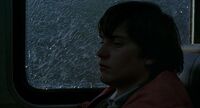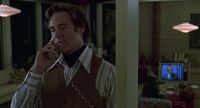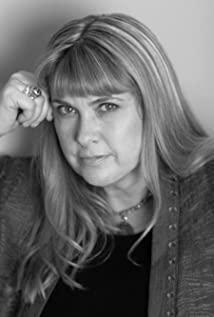The hormonal 1960s are everywhere being talked about: anti-war marches, revolutionary movements, hippies, Beatles, Maoism, Ellen Ginsburg, sexual liberation... In the eyes of leftist writers, it was an era of romanticism.
But the 1970s gave a vague impression. The U.S. withdrawal from Vietnam and the Watergate incident have shattered the image of patriarchy and disillusioned idealism. The group of people who swayed their youth recklessly in those days gradually entered middle age and ushered in a mid-life crisis.
The sense of loss is reflected in the family, resulting in indifference among members, coupled with the movement of sexual liberation from the campus to the society, and the prevalence of wife-swapping games, which has brought a huge impact on families based on traditional ethics.
This is the setting for "Icestorm," which is set on a certain Thanksgiving. Thanksgiving, a traditional American family gathering day, husband Ben Hood is going through his own mid-life crisis. He has little communication with his wife, lacks self-confidence and authority in the eyes of his children, and maintains a relationship with his neighbor Jenny. For an extramarital affair, she was treated as the object of her confession, but she was coldly rejected by the other party.
Hood and his wife inadvertently broke into a wife-swapping party. After hesitating, he stayed. Here, he also met his neighbor and mistress, Jenny, and saw that his wife and mistress were both approached. Hood poured himself into it. Drunk, the party is over, the wife and mistress have taken someone else's keys, and they are lying on the bathroom floor decadently.
This 1970s family, facing disintegration, was experiencing an ice storm, both outside and inside.
But extramarital affairs don't always go as planned, like Hood's wife Elena's unsuccessful sex in the car with a neighbor, and the exploration ends up being tedious.
Unfortunately, Jenny's son Mike was electrocuted in the raging ice storm, adding to the trouble for the two families in the precarious situation. But the plot didn't take a turn for the worse. Perhaps in the face of a storm, people's sense of shame, fear, and the need to seek emotional support will regain the upper hand, and all of these are also the emotional necessity to maintain a family. The next morning, the family greeted their son Paul at the train station. In the car, the embarrassed father shed painful tears in front of the family. The atmosphere was a little heavy, but more of a steady tranquility.
The structure of "Ice Storm" is not event-driven. Except for the echo of the first and last shots, forming a ring, in other cases, it is all detail-driven, and the logical relationship between the front and rear of the plot is not very close. Ang Lee admits that when cutting the film, There were a lot of difficulties, and sometimes, two similar episodes didn't seem to be connected. At this time, music played a key role. The melancholy background music combined with the melodious Indian flute, aroused the audience's emotions, and erased the lack of plot connection.
"Ice Storm" is Ang Lee's first time directing a native American feature film. As a first-generation immigrant who grew up in Taiwan, the sense of alienation in his identity gave him a "bystander" perspective, according to native American audiences. , the film's description of emotions is very accurate.
This is the story of America in the 1970s. But it is also happening in China now. After idealism, under the spirit of the era dominated by consumerism for entertainment and sexual liberation, family betrayal has become a social norm. Whether Chinese families can withstand the impact of the times, whether to return or reorganize , would be a very interesting topic.
View more about The Ice Storm reviews











